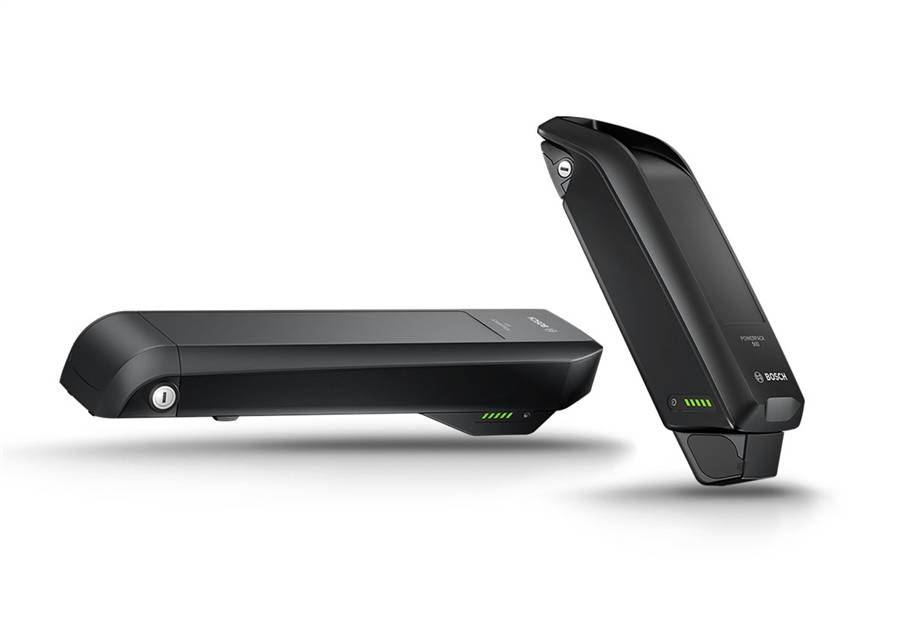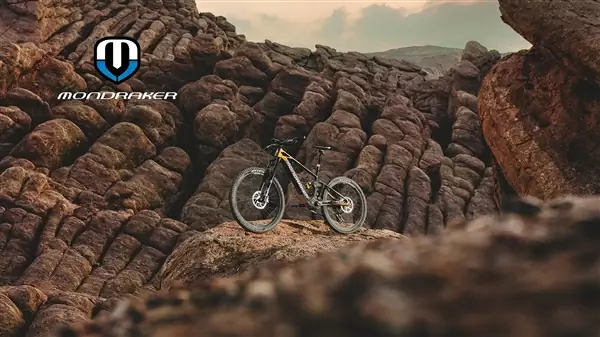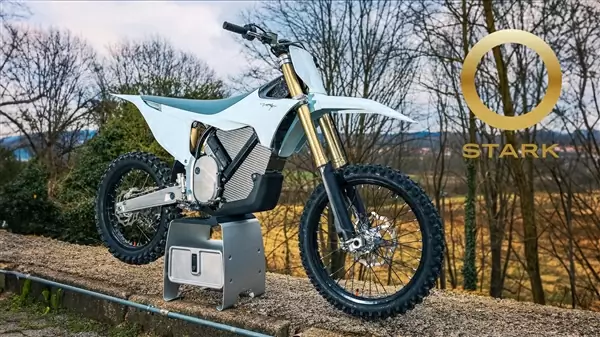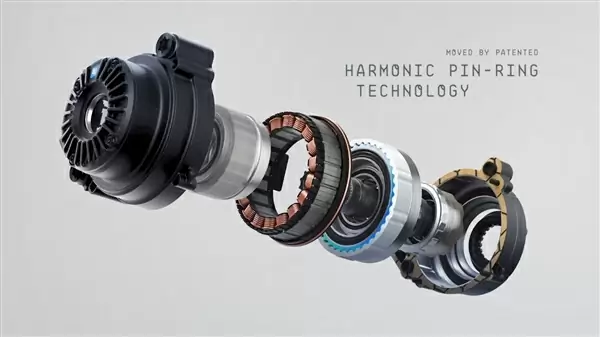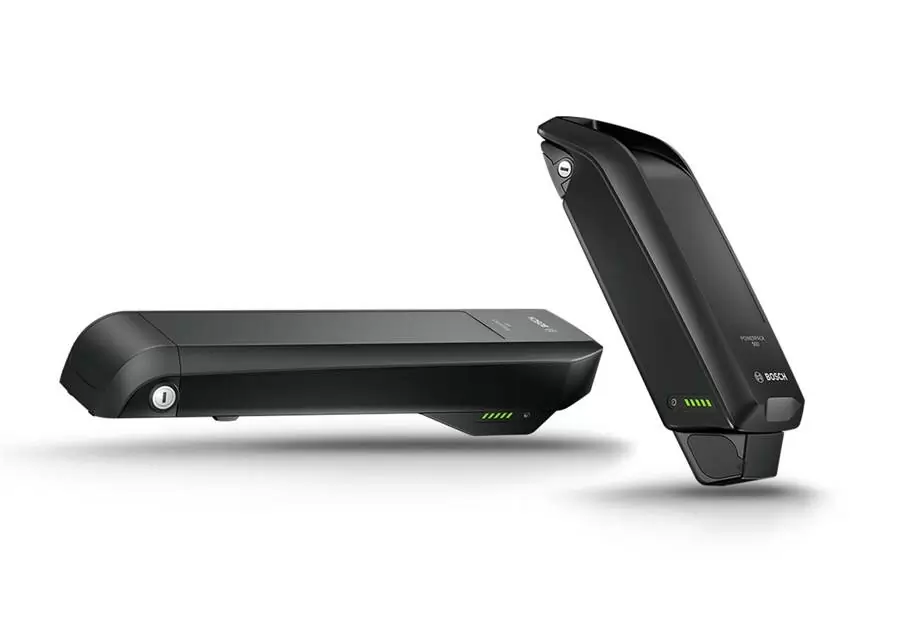
PowerPack
What range can I achieve with the Bosch eBike system?
With the Bosch drive, too, when the battery is fully charged the range depends first and foremost on the selected riding mode, i.e. the level of support. Eco mode and its 30% support enables a greater range than Turbo mode and its powerful support of up to 275%.
Further important influencing factors are:
- Route profile (flat or hilly)
- Wind conditions (tailwind or headwind)
- Tyre pressure (our tip: always have tyres at the maximum permitted pressure!)
- Rider's or overall weight (luggage!)
- Air temperature (the battery's performance is diminished at temperatures below freezing)
- Battery power (300Wh, 400Wh, 500Wh)
- Age of battery (a battery with a high mileage no longer offers the same performance as a new one)
- Rider's own pedal power
Test drives by Bosch under various conditions (air temperature, route profile, wind, gearshift profile) resulted in ranges from 45* to 60* kilometres (in Turbo mode) and 85* to 110* kilometres (in Eco mode), depending on whether a 300Wh or 400Wh battery was used.
With our Range Assistant, you or your customers can calculate a battery's range taking the above-mentioned factors into consideration.
*Range in a mixture of ideal, good and poor conditions, a third of each, occasionally below/above. Ranges from 40 to 140km can be achieved with the Bosch drive system.
Is this principle correct: The higher the battery capacity, the further the range?
Pure battery capacity in watt hours (Wh), i.e. the "tank size", is not the only decisive parameter where range is concerned. Many customers fail to think about efficiency, i.e. the drive's economical, low-consumption performance profile, but the bottom line is that this variable is more important and this is where our engineers have applied themselves.
Many customers who have chosen a bike with Bosch drive now greatly appreciate this efficiency. Due to its narrow, cadence based speed range, the mid-drive motor has a much higher average efficiency than, say, a hub motor. If you pay close attention to the comments on various Internet forums, you can see that the Bosch drive is unsurpassed in mountainous territory, and is setting standards. This performance is achieved with a supposedly "small" battery, but with its weight of 2.5kg it is lighter than large batteries with their high Wh figures and long charging times. So with the Bosch drive, average distances of 65 to 85 km can be achieved with ease, with medium support. Longer distances are also possible if the battery is charged, the riding conditions are right and the rider is not continuously in Turbo mode.
A further advantage of Bosch: Bosch PowerPacks 300 and 400 are fully recharged with the charger in just 2.5h or 3.5h. The PowerPack 500 reaches its full charge in max. 4.5h. 300/400 Wh batteries are half charged in approx. 1-2h, while the 500Wh battery takes approx. 2h to be 50% charged. These charging times can easily be incorporated when stopping for a break and, at a cost of approx. 9 eurocents per charge, are a mere trifle.
What is the cost of a battery charge or a kilometre on an eBike powered by Bosch?
Erzeugung stammt, also durch Wind-, Wasserkraft oder Sonnenergie erzeugt wird. Based on a kilowatt-hour price of 25 eurocents for green electricity and transfer losses of 25% while charging, fully charging an Bosch eBike System costs just 9 eurocents.
Based on a conservative range estimate of 70 km per charge, the price per kilometre is a mere 0.129 eurocents (!). For short distances this is surely THE alternative to the car
Does the Bosch eBike drive have energy recovery?
With the mid-drive motor selected by Bosch, energy recovery would be technically extremely complex, which would also drive up the price accordingly. Furthermore, this additional expense would be out of all proportion to the low efficiency of approx. 5%.
What are the battery technical data?
The Bosch battery is a lithium-ion rechargeable battery with a min. capacity of 8.2/11.0/13.4Ah and a min. energy content of 300/400/500Wh. The housing contains 40 round cells and an integrated battery management system. The important battery characteristics such as charge level, overheating, overvoltage, undervoltage, cell balance, etc. are monitored. The battery is switched off in good time if necessary.
| Unit | Values | |
|---|---|---|
| Weight: |
2.4kg (standard battery) ±100 grams 2.5kg (rack battery) ±100 grams |
|
| Storage temperature: | -10 to +60°C | |
| Operating temperature: | -5 to +40°C | |
| Rated voltage: | 36 V | |
| Voltage after a full charge: | 42 V | |
| Cutoff voltage: | 30 V |
Can the charger be operated on a 12V on-board power supply, e.g. a camper van?
No. The charger can only be operated with a mains voltage of 230V, and non-compliance will cause it to be irreparably damaged. For the same reason, always use the Bosch genuine charger to charge the Bosch eBike battery, never a charger from another manufacturer.
However, since 2015 there has been a Travel Charger for problem-free eBike charging on the move – via the cigarette lighter or 12V socket of a car or camper van. The charger, which weighs under 500 grams, features integrated discharge protection for the car battery
Are there any tips for battery care?
1. Only use the genuine charger
To make sure the high-performance battery suffers as little loss of capacity as possible over years of use, intelligent charge management is needed to ensure gentle battery charging and care during the charging process. This can only be ensured if the genuine charger is used. Chargers from third-party suppliers are seldom able to guarantee this, and therefore damage the battery.
2. Always charge your battery correctly
To do so, follow the tips from p.16 of the manual.
3. Do not store uncharged/note the storage temperature
If you are not going to use your eBike for a longer period, take out the battery beforehand and charge it approx. 60% (three LEDs on the battery charge indicator). In this condition, it can then be stored without problem at room temperature (20°C) for six months without recharging. Since you will be enticed outside by the first rays of sun by then, a situation like this should only occur rarely.
4. Careful battery handling during operation in wintry temperatures
The battery cannot be expected to supply its maximum power at freezing temperatures. If possible, avoid long trips at the maximum support level in wintry temperatures, as these conditions put the battery under additional stress. Bosch recommends refraining from continuous battery use at temperatures below -5°C, unless you have previously warmed it to room temperature. A battery at room temperature will not cool down significantly during use. Therefore, do not store the battery outdoors in winter, but in a garage or suitable indoor room.
5. Charge the battery in a warm environment in the cold season
Charging currents represent pure stress for batteries that have cooled down in the garage overnight, because their increased internal resistance due to the cold considerably hampers the charging process. Therefore, we recommend that "winter riders" always remove the battery when they get home, and store or recharge it at room temperature. This ensures good starting behaviour the next morning, even if it is ice cold.
6. Deep discharge
Modern lithium-ion cells such as those used by Bosch only have very low self-discharge rates. In addition, the protective electronic processor of the intelligent battery management system (BMS) switch off the electronics for protection as soon as necessary. This prevents deep discharge.
7. Remove the battery of your eBike before transporting it on your car's rear bike rack
Transport the battery of your eBike, which should be secured against slipping and accidents, inside the vehicle.
You can find valuable information on our PowerPacks in our Battery Guide Brochure (available from the online store). You are also welcome to pass this on to your end customers!
Why does the range display fluctuate (more range is shown when more kilometres are covered)?
The range is continually calculated during your journey. This does not happen in the display unit/on-board computer, but in the processor housed inside the drive unit. The residual range is calculated based on your riding style over the last ridden kilometre. As a result, the range falls considerably during a long, steep climb that you may have covered in Turbo mode. If, after this ascent, you then continue on the level in a moderate mode such as Eco, after a short time the range will increase once more.
Why is the max. range of 145 km not displayed at the lowest support level when the battery is fully charged?
The range display is an extremely complex subject. Even in a car, precise calculation is not always possible. In the eBike, additional aspects must be factored in, such as predicting how much force the cyclist will exert, and which mode he will use. Unfortunately therefore, precise range indication is difficult.
A reference variable is always required to calculate the residual range. This is calculated based on the manner in which the last kilometre was ridden (selected mode, torque, cadence, etc.).
Example: If you have ridden up a long, steep incline at high speed in Turbo mode before charging the battery, the system "takes note" of this. So when you switch the system on after fully charging the battery, the residual range will be lower, because the system is assuming that you will continue your journey in the same manner as last time. If, instead, you then set off along a flat surface in a low support mode such as Eco or Tour, the residual range display very quickly increases, at least until you change to a higher mode and/or begin another ascent.
Our tip: Use the residual range display as a rough guide for continuing your journey. However, if you know the route always factor in its effects on the residual range. The residual range display is useful, but it must not stop you thinking for yourself.
Are the PowerPacks protected against overheating?
The PowerPacks of the Bosch eBike system feature an ultramodern battery management system (BMS), which ensures safe and optimum battery function under all outdoor conditions such as heat, frost and vibrations. Among other things, this battery status monitor makes sure that the power delivered by the system is reduced before any possible overheating, so you do not need to have any worries in this respect.
What is the most energy-saving way of riding my eBike?
You should never start off in a high gear (e.g. after stopping at traffic lights), this saves energy.
Do you always need to be at full throttle? Even if it's fun – it is a good idea to not ride continuously in Turbo mode. This has huge effects on range.
Constant cruising protects the battery. Conversely, continuous stop and go, as in the city, forces the battery to deliver maximum power – costing energy and reducing the range.
Try to make the most of the different support options. Important: Do not forget "normal" gear shifting. In addition, keeping the bike in technically good condition (tyre pressure) ensures a lower energy consumption.
Play with the gears! Sometimes a higher gear with a constant exertion of force can be the best choice.
Always store and charge the battery at home in the cold season, and only insert it shortly before you set off.
Which manufacturers offer luggage racks designed for fitting the Bosch PowerPack?
The following luggage rack manufacturers offer Bosch-compatible models:
Racktime, Hebie, Pletscher, Curana
Do Bosch eBike PowerPacks have a memory effect?
The high-quality lithium-ion batteries used by Bosch do not have a memory effect, which was often a source of chagrin with the Ni-Cd frequently used in the past, whereby the loss of capacity due to very frequent partial charging rapidly diminished the battery's capabilities.
With Bosch PowerPacks, 50% partial charges are seen as just that. In other words, two 50% partial charges are one complete charge, and this has no negative effect on battery capacity.
For the user, this means considerably simplified battery handling: the battery can be charged, wholly or partially, regardless of how full it is already. With no effect on service life!
How much does a spare battery cost?
You can find a list of all available PowerPacks, with recommended retail prices, at our online store and in our Spare Parts Catalogue. The catalogue is available to download here on the portal in the "Service" section.
How much does an additional charger cost?
You can find the recommended retail prices of our chargers at our online store and in our Spare Parts Catalogue. The latter is available to download here on the portal in the "Service" section.
Are there recommended operating and storage temperatures for the drive components?
| Operation | Storage | |
|---|---|---|
| Motor | - 5°C to 40°C | - 40°C to 100°C |
| Battery | - 5°C to 40°C | - 10°C to 60°C |
| HMI | - 5°C to 40°C | - 40°C to 60°C |
Outside these temperature limits, the support may be reduced or disabled.
Does it harm the eBike PowerPack to be displayed in a sunny showroom window?
The battery management system switches the battery off if ever the temperature exceeds the 60°C threshold. Nevertheless, lasting sunlight does damage the battery cells, causing them to age faster and lose power. Therefore, we recommend removing the battery and storing them in a cooler place.
I have found out that PowerPacks are hazardous goods. What do I have to do?
eBike batteries with a power of over 100Wh are no longer considered device batteries, but industrial batteries to UN 3480 and 3481. They are indeed classified as hazardous goods; therefore we recommend all tradespeople to check the fire insurance for their company building, and upgrade it to cover Fire Class D.
Store spare batteries in a cool place (not in a sunny showroom window!). Various suppliers now also offer special storage cupboards for eBike batteries. Use the first in, first out principle for storage, to prevent long storage times.
Never put out damaged, smoking Li-ion batteries with water; this will produce explosive oxyhydrogen. An oxyhydrogen explosion can have severe effects! Therefore, always get an Li-ion battery with this kind of damage outside as quickly as possible, and place it in dry sand. Contact the local authorities or recycling centre regarding final disposal.
When shipping or returning Li-ion batteries, ensure adequate packaging and, in particular, correct labelling. Bosch eBike offers appropriately labelled hazardous goods cardboard boxes designed for Bosch eBike batteries at a low price.
Moreover, tradespeople are under obligation to return old batteries, even if these were not purchased from you.
You can find more information on the subject of hazardous goods here on the portal in the "Technical information" section. It is also advisable to attend a hazardous goods training course. In the Training section you will find the online Hazardous Goods Training Session provided by SAFETY Training Plus GmbH.
Does Bosch eBike Systems offer to replace a faulty battery housing?
A faulty battery housing cannot be replaced for safety reasons. In addition, shipping faulty or damaged batteries entails high safety risks and costs, and may therefore only be done following prior instructions from Bosch eBike Service. Please note the safety instructions on page 147. The dummy battery housing available from Bosch eBike Systems as an accessory may not be used to repair a damaged battery.
What happens to eShift when the eBike battery is empty? Is enough residual energy still available for shifting gears?
Residual capacity is reserved for shifting support, similarly to lighting support. This way, a sufficient number of gear changes can generally still be carried out when the eBike battery is empty.
Are there technical differences between the batteries from Active Line, Performance Line and Performance Line CX?
No, the batteries differ only in the surface treatment of the housing.
What should I do if the pin cover of the battery contacts comes off when I remove the charging plug?
The pin cover can be stuck back on. You can find instructions on this here on the portal in the "Service" section under "Technical information" – "Documents". In addition, you should slightly trim the guide lugs of the charging plug. This problem was resolved in series production from early summer 2014.

